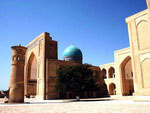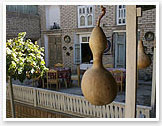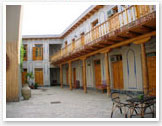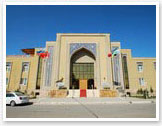 |
| source: astrosurf.com |
If you drive 8 kilometers west of Bukhara, you will find yourself in the small village Sumitan, which once was the center of the dervish order of hodzhagon. The main sight of this village is the necropolis Chor-Bakr, which in the West is better known as "the city of the dead", and is listed as a World Heritage Site by UNESCO.
The first buildings appeared here as early as in the X century, in the epoch of the reign of Samanid dynasty. But the main development began in the epoch of the reign of Djuybarsk sheikhs, who held many public positions in Bukhara. The main and constituting burial in the necropolis is the burial of Abu Bakr Sayyid, the descendant of the prophet Muhammad and ancestor of all Dzhuybar sayyids. By the way, the name of Chor-Bakr is translated by some as the "Four Brothers". But there is also the variant as "four Bakrs” although only two members of the family Bakr (father and son) were buried here.
Totally, within the complex there are more than 30 buildings that were built at different times. Introduction to the necropolis begins with the darvaza-khana, near to which the road from Bukhara ends and the street leading to the central ensemble of "the city of the dead" begins.
The main complex of buildings consists of khanqah, madrassah and mosques, which are directed to the east, towards the entrance. All of them were built during the XVI-XVII centuries, the period of the erection of many buildings of necropolis. Thanks to archaeological research, it became known that the buildings erected in X-XIII century occupied only a tenth of the current area of the complex.
The feature of necropolis of Chor-Bakr is the fact that it consists not of mausoleums, but of so-called Khaziras. Khazira is the building, oriented to the four winds, without coverings and the entrance of which is decorated with a special door - Darvoza.
The rules of burial were changed, and in the XIX century, all family members, including women, were buried here. And at the turn of the XIX-XX centuries, last Khaziras and small minaret are built in front of the central ensemble of the cemetery.
Eventually Chor-Bakr became not just the collection of burial vaults, but also the reflection of evolution of oriental architecture and art over thousands years.







